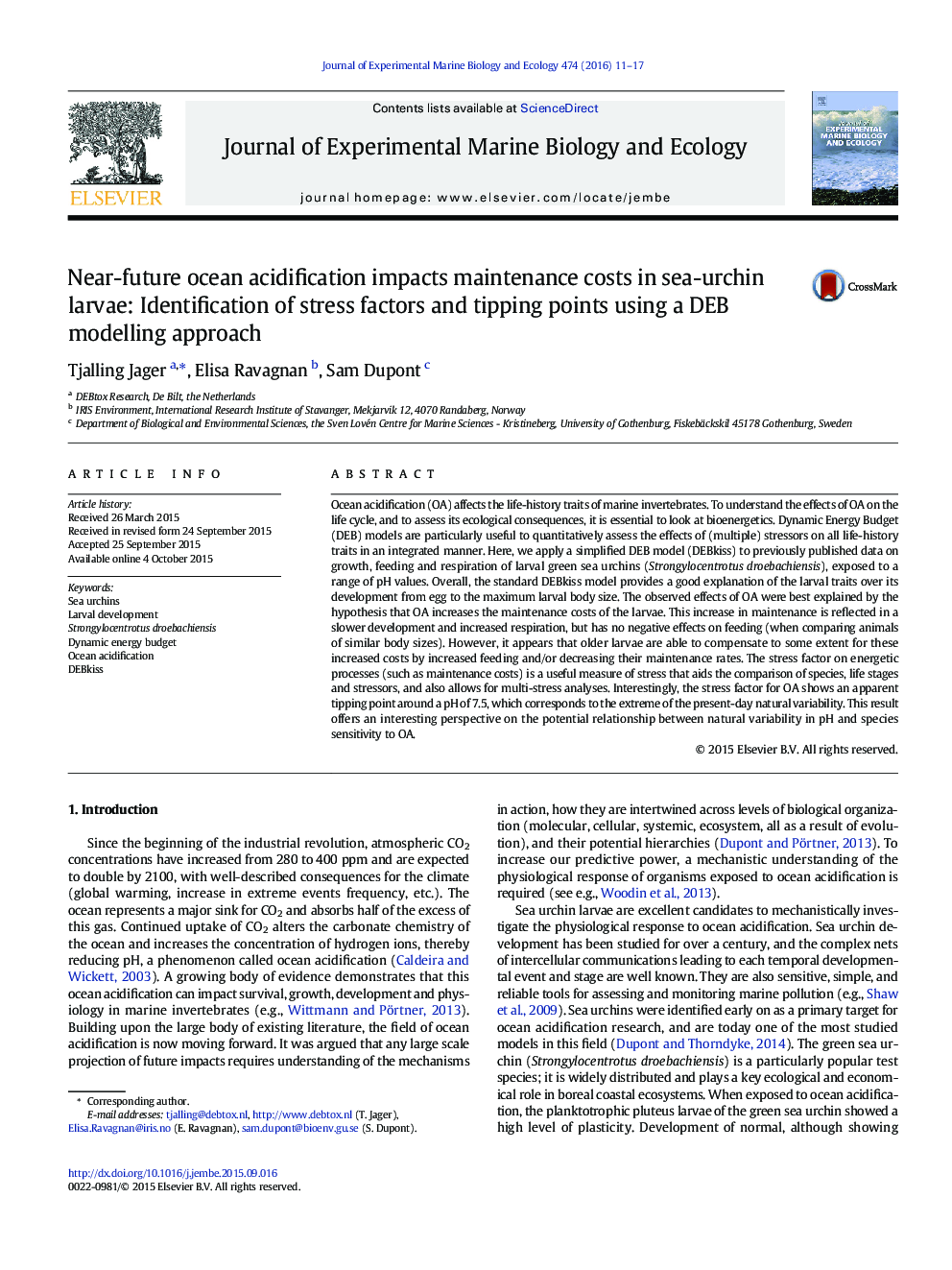| کد مقاله | کد نشریه | سال انتشار | مقاله انگلیسی | نسخه تمام متن |
|---|---|---|---|---|
| 4395297 | 1618401 | 2016 | 7 صفحه PDF | دانلود رایگان |

• A dynamic energy budget (DEB) model is used to analyse effects of decreased pH on sea-urchin larvae.
• Effects on growth, feeding and respiration where analysed within a single model framework
• Acidification increased maintenance costs in the larvae, with a tipping point around pH of 7.5.
• DEB modelling allows expressing pH stress on a generic scale, facilitating comparisons.
Ocean acidification (OA) affects the life-history traits of marine invertebrates. To understand the effects of OA on the life cycle, and to assess its ecological consequences, it is essential to look at bioenergetics. Dynamic Energy Budget (DEB) models are particularly useful to quantitatively assess the effects of (multiple) stressors on all life-history traits in an integrated manner. Here, we apply a simplified DEB model (DEBkiss) to previously published data on growth, feeding and respiration of larval green sea urchins (Strongylocentrotus droebachiensis), exposed to a range of pH values. Overall, the standard DEBkiss model provides a good explanation of the larval traits over its development from egg to the maximum larval body size. The observed effects of OA were best explained by the hypothesis that OA increases the maintenance costs of the larvae. This increase in maintenance is reflected in a slower development and increased respiration, but has no negative effects on feeding (when comparing animals of similar body sizes). However, it appears that older larvae are able to compensate to some extent for these increased costs by increased feeding and/or decreasing their maintenance rates. The stress factor on energetic processes (such as maintenance costs) is a useful measure of stress that aids the comparison of species, life stages and stressors, and also allows for multi-stress analyses. Interestingly, the stress factor for OA shows an apparent tipping point around a pH of 7.5, which corresponds to the extreme of the present-day natural variability. This result offers an interesting perspective on the potential relationship between natural variability in pH and species sensitivity to OA.
Figure optionsDownload high-quality image (182 K)Download as PowerPoint slide
Journal: Journal of Experimental Marine Biology and Ecology - Volume 474, January 2016, Pages 11–17